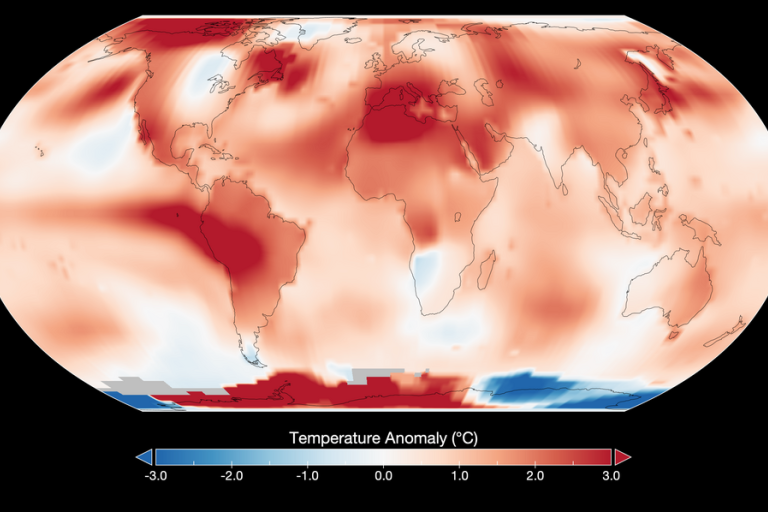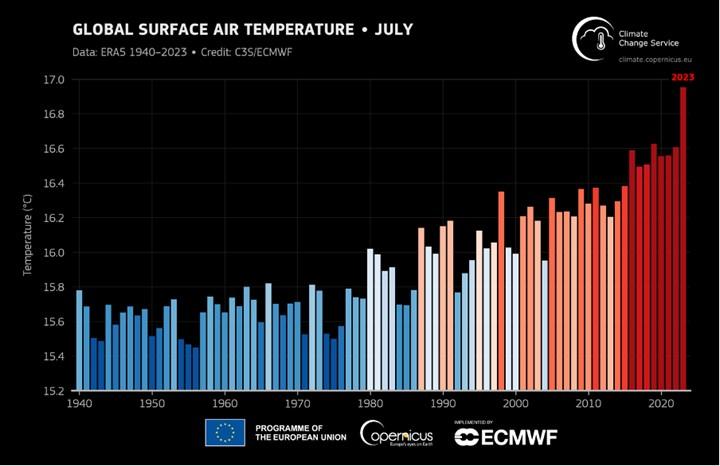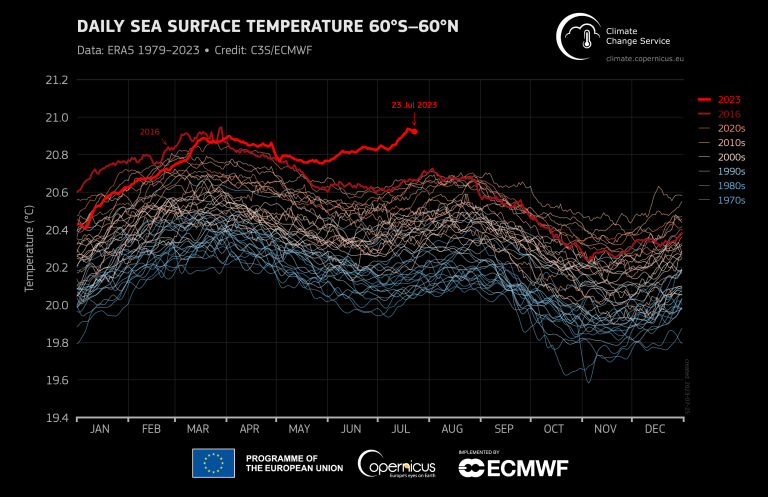July 2023 confirmed as hottest month on record

Earth just had its hottest July on record. Sea ice was the lowest on record. For the fourth consecutive month, the global ocean surface temperature hit a record high.
The monthly climate monitoring reports from the European Union’s Copernicus Climate Change Service, the US National Oceanic and Atmospheric Administration and NASA confirm the extraordinary pace of climate change as a result of heat-trapping greenhouse gases in the atmosphere.
WMO uses the datasets in its State of the Global Climate reports and to inform decision-makers around the world. The year to date has been the third warmest on record.

Based on the information from the WMO community, United Nations Secretary-General António Guterres warned that “the era of global warming has ended” and “the era of global boiling has arrived.”
July was estimated to have been around 1.5°C warmer than the pre-industrial average for 1850-1900, according to the Copernicus Climate Change Service, operated by the European Centre for Medium Range Weather Forecasting. It said July was 0.33°C warmer than the previous warmest month, July 2019.
Asia, Africa, and South America each had their warmest July on record. South America had its highest monthly temperature anomaly of any month on record.

Global average sea surface temperatures continued to rise, after a long period of unusually high temperatures since April 2023, reaching record high levels in July. For the month as a whole, global average sea surface temperatures were 0.51°C above the 1991-2020 average.
The North Atlantic was 1.05°C above average in July. Marine heatwaves developed south of Greenland and in the Labrador Sea, in the Caribbean basin, and across the Mediterranean Sea.
The record ocean heat is being reported at the start of an El Niño event, which is expected to lead to higher temperatures, more marine heatwaves and coral bleaching. It is expected that the biggest El Niño temperature impacts will be felt in 2024.
“We just witnessed global air temperatures and global ocean surface temperatures set new all-time records in July. These records have dire consequences for both people and the planet exposed to ever more frequent and intense extreme events,” Samantha Burgess, Deputy Director of the Copernicus Climate Change Service (C3S), told a media briefing at the United Nations in Geneva.
“News of the warmest month on record perhaps shouldn’t come as a surprise, said Chris Hewitt, WMO Director of Climate Services, told the media briefing. “2015 to 2022 were the eight warmest years on record, and this is on the back of a clear warming decade-on-decade. As we continue to see continued increases in concentrations of greenhouse gases in the atmosphere, this long-term warming will continue and temperature records will continue to be broken.”
Sea ice
Sea ice coverage hit a record low: July 2023 set a record for the lowest global July sea ice extent (coverage) on record. Globally, sea ice extent in July 2023 was about 1 217 294 square kilometers (470 000 square miles) less than the previous record low from July 2019, according to NOAA’s National Centers for Environmental Information.
Antarctic sea ice coverage ranked lowest on record for a third-consecutive month, running about 1 million square miles (2.59 million km2) — roughly the size of Argentina — below the 1991–2020 average. This was 580 000 square miles (1 502 190 km2) below the previous record low from July 2022. The Arctic sea ice extent for July 2023 ranked as the 12th smallest in the satellite record.
Hydrological highlights
July 2023 was wetter than average over most of northern Europe and in a region from the Black Sea and Ukraine to northwestern Russia.
Drier-than-average conditions were experienced across the Mediterranean basin, with Italy and southeastern Europe having the largest anomalies.
Beyond Europe, July 2023 was wetter than average over northeastern North America, Afghanistan, Pakistan, northeastern China, northern and eastern Australia, and Chile.
Extratropical drier-than-average regions included Mexico and the southwestern United States, central and southeastern Asia, southwestern Australia, and parts of southern Brazil and Paraguay.

EU Copernicus Climate Change report is here
NASA July monthly climate report is here
NOAA July monthly climate report is here










